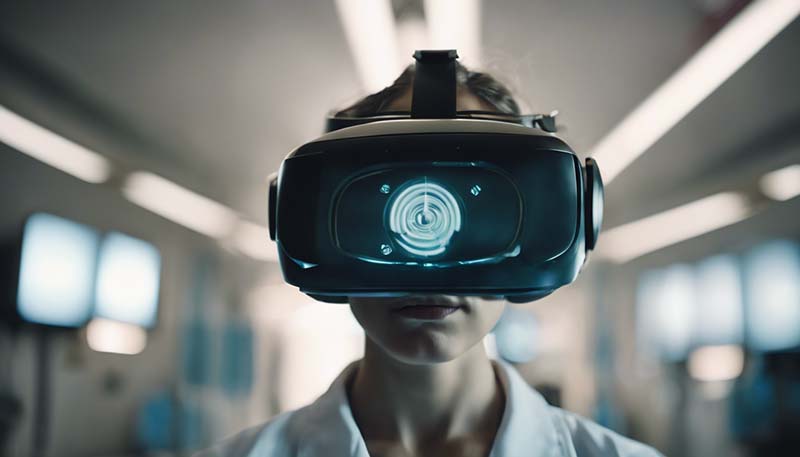Exploring the Potential of VR in Medical Training
Exploring the Potential of VR in Medical Training
Virtual Reality (VR) has made significant strides in recent years, with its applications spanning across a wide range of industries. One of the most promising areas where VR is making a mark is in medical training. The immersive nature of VR provides a unique platform for medical professionals to learn, practice, and refine their skills in a safe and controlled environment. This article delves into the potential of VR in medical training, discussing its current applications and future possibilities.
Introduction to VR in Medical Training
VR in medical training is not just about simulating a real-world environment; it's about creating a platform that allows medical professionals to experience and interact with that environment in a way that closely mimics reality. This immersive experience can be used for a variety of purposes, from teaching medical students about human anatomy to training surgeons for complex procedures.
Current Applications of VR in Medical Training
Anatomy and Physiology Education
One of the most immediate applications of VR in medical training is in the field of anatomy and physiology. VR can provide a 3D, interactive model of the human body that allows students to explore and understand the complex structures and systems within the body. This can be particularly useful for visual and kinesthetic learners who prefer to learn by seeing and doing.
Advertisement
Surgical Training and Simulation
VR has the potential to revolutionize surgical training. By creating realistic simulations of surgical procedures, VR can provide medical students and surgeons with a safe environment to practice and refine their skills. This can lead to better patient outcomes and a higher level of surgical proficiency.
Emergency Response Training
Emergency situations require quick thinking and decisive action. VR can be used to simulate a variety of emergency scenarios, allowing medical professionals to practice their response and decision-making skills in a controlled environment. This can help to improve their ability to handle real-world emergencies effectively.
Pain Management and Exposure Therapy
VR has also been used in the field of psychology and psychiatry for pain management and exposure therapy. By creating immersive environments that can distract from pain or simulate the feared object/situation, VR can help patients to manage their pain or overcome their phobias in a controlled and safe manner.
Patient Care and Communication Skills
Communication and empathy are key skills for any medical professional. VR can be used to simulate patient interactions, allowing medical students to practice their communication and bedside manner skills in a safe and controlled environment. This can help to improve patient satisfaction and overall care quality.
Challenges and Limitations
While VR has the potential to greatly enhance medical training, there are also challenges and limitations that need to be considered. These include:
- Cost: High-quality VR equipment can be expensive, which may limit its accessibility for some institutions.
- Technical Issues: As with any technology, there can be technical issues or glitches that can disrupt the VR experience.
- Comfort and Accessibility: Not everyone is comfortable using VR, and some individuals may experience motion sickness or other adverse reactions.
- Validation and Accreditation: There is a need for standardization and validation of VR training programs to ensure that they are effective and meet the required educational standards.
Future Possibilities
As VR technology continues to advance, there are a number of exciting possibilities for its use in medical training. Some of these include:
- Remote Collaboration: VR can enable medical professionals from different locations to collaborate in a shared virtual environment, allowing for more effective teamwork and knowledge sharing.
- Procedural Rehearsal: VR can be used to rehearse complex medical procedures, allowing medical professionals to plan and optimize their approach before performing the procedure on a real patient.
- Continuing Education: VR can provide a platform for continuing education and professional development, allowing medical professionals to stay up-to-date with the latest techniques and best practices.
- Patient Education: VR can be used to educate patients about their conditions and treatment options, improving their understanding and engagement with their healthcare.
Conclusion
VR has the potential to transform medical training, providing a safe, immersive, and interactive learning environment. While there are challenges and limitations to consider, the benefits of VR in medical training are significant and the technology is likely to play an increasingly important role in the education and training of medical professionals in the future.

Comment